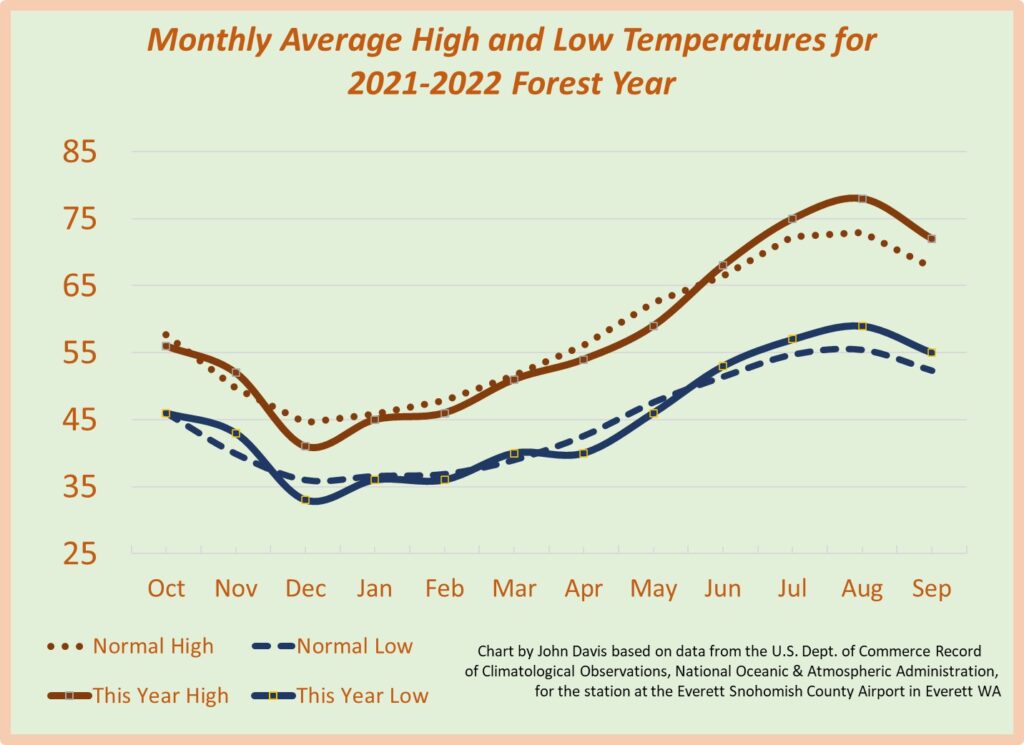It’s been an especially long, hot, dry summer. As a result, several of the Western Redcedars in my Everett neighborhood have died, and others are looking very poor. However, those dying are all growing next to other large conifers and next to impervious surfaces, so presumably they simply haven’t gotten enough water this summer and should probably never have been allowed to grow where they are. Still, this year’s extreme dry season is almost surely related to climate change and comes as yet another warning that we’ve got to change some of our forest restoration practices.
In its predictions for the Northwest, the most recent National Climate Assessment states: “Average winter precipitation is expected to increase over the long term, but year-to-year variability in precipitation is also projected to increase. Years of abnormally low precipitation and extended drought conditions are expected to occur throughout the century, and extreme events, like heavy rainfall associated with atmospheric rivers, are also anticipated to occur more often.”
Historically, the “normal” precipitation for Paine Field in Everett from July through September is 3.50 inches. This year it has only been 0.31 inch, a deficit of 3.19 inches. For the “forest year” from October 2021 through September 2022 the normal precipitation is 33.37 inches. This year it has only been 27.64 inches, a deficit of 5.73 inches — about 17% less than normal.


What might our changing climate mean for forest restoration practices in the Puget Lowlands?
Can We Still Plant Native Conifers?
We need to anticipate longer dry seasons when we plant trees, but I don’t think that means we have to give up on our native conifers. I still believe that Western Redcedars planted in low lying areas with shallow slopes and deep soil will be fine. Douglas Fir and Shore Pine are more drought tolerant, but needing full sun there are few good sites to plant them. I’m still planting Grand Fir in aging deciduous forest because it is somewhat tolerant of both drought and shade.
Irrigation Through October?
If climate change results in longer, hotter dry seasons, then the survival of the trees we plant may require irrigation through October, and perhaps for three dry seasons instead of just two. I recently decided I needed to give some water to a group of Grand Firs I planted four years ago. I heard one gardener say that we now need to water all of our conifers throughout the dry season.
No More October Plantings?
Trees and shrubs don’t like to be planted in dry ground. After a long dry season, it takes several inches of rain to even begin making the soil favorable for planting. Traditionally, we’ve been able to start planting them in late October, but maybe November is going to be more reasonable going forward. And even if it means carrying water, it’s probably more important than ever to mud them in.